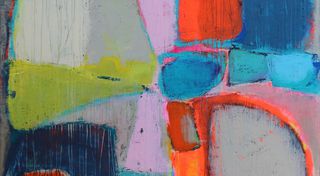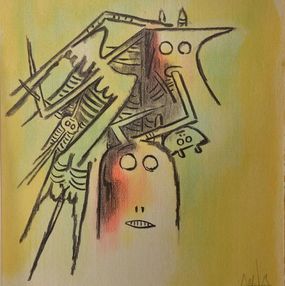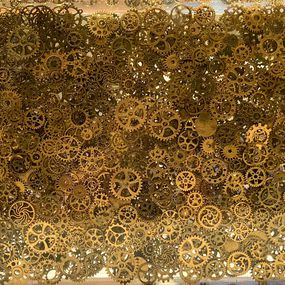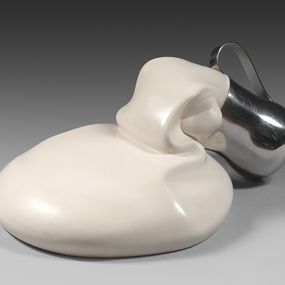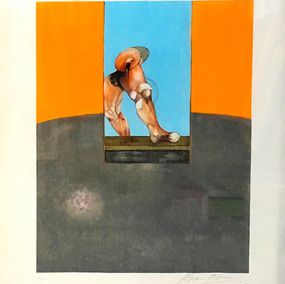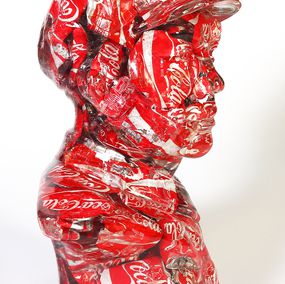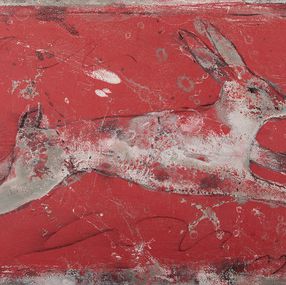

Every man is an artist.
Biography
Joseph Heinrich Beuys, born in Krefeld, Germany on May 12, 1921 and died on January 23, 1986 in Düsseldorf, is a German artist. Joseph Beuys defined himself first as a sculptor, even if he remained an extraordinary artist. He produced sculptures , drawings , performances, installations and gave numerous lectures, in a very politically engaged artistic ensemble. He also taught in various institutes.
Joseph Beuys was the only child of a Catholic merchant family. He spent his adolescence under the Hitler regime. During his formative years, a chance encounter with the work of sculptor Wilhelm Lehmbruck determined Beuys's vocation and career direction. As if by a revelation, he realized that an entire field of expression through sculpture had barely been explored. He began studying medicine before being drafted into the Air Force in 1940 on the Russian front, where he served as a Luftwaffe pilot.
During the winter of 1943, his plane was shot down while flying over Crimea. Taken in by Tatar nomads who fed him honey, he came back to life, covered in fat and wrapped in felt blankets. This experience would resonate throughout his later work. It is now known that this wartime episode was invented by the artist to better contribute to his personal mythology. After several bombing missions, he was taken prisoner of war in Great Britain from 1945 to 1946.
Back in Germany, Joseph Beuys decided to devote his life to art. In 1947, he enrolled at the Düsseldorf Academy, where he studied under Joseph Enseling and Ewald Mataré. After graduating in 1951, the brothers Franz Joseph and Hans van der Grinten began collecting his works and became his most important clients. After a severe nervous breakdown, he rested in the countryside from 1955 to 1957 with his collector friends. There, he painted numerous watercolors that anticipated his later sculptures.
From 1958 to 1961, the bulk of his vocabulary was established, drawing on materials rarely used in art. He included organic materials in his installations, reminiscent of his plane crash: felt, which insulates from the cold, fat, a symbol of heat and energy, honey, but also beeswax, earth, butter, dead animals, blood, bones, sulfur, wood, dust, nail clippings, and hair. The artist invented a character for himself (recognizable by his hat and waistcoat).
Beuys was appointed professor of sculpture at the Düsseldorf Academy in 1961. He then participated in the Fluxus movement, which advocated "performance" and "environments." For Beuys, as for the protagonists of this movement, art is life. The act, art in action, is more important than the artwork.
Beuys was involved in various political activities. He campaigned for direct democracy, the environment , and other socio-political causes. In 1967, he founded the German Student Party and in 1970 the Organization of Non-Electors. He even ran for the Bundestag.
He was dismissed from the Düsseldorf Academy in 1972 for supporting student protesters, but he regained his position six years later. The following year, he founded the International Free University for Creativity and Interdisciplinary Research. He developed his concept of "social sculpture," which was intended to help achieve a more just society; he believed that every person is an artist, and that if everyone uses their creativity, everyone will be free. The 1970s were also marked by numerous exhibitions. In 1978, he was made a member of the Adademie der Kunst in Berlin. In January 1986, the artist received the Wilhelm Lehmbruck Prize in Duisburg. He died on January 23, 1986, in Düsseldorf.
On the occasion of the centenary of the artist's birth, numerous events around the world were dedicated to him, notably at the Musée d'Art Moderne in Paris with the exhibition "Joseph Beuys. Line by Line, Sheet by Sheet", which was previously presented at the Dresden Cabinet of Prints, Drawings and Photographs (Kupferstich-Kabinett) in Dresden.
Nationality
Categories
Artistic movements


Joseph Beuys
Fine Art Drawings - 13.5 x 9 x 0.5 cm Fine Art Drawings - 5.3 x 3.5 x 0.2 inch
$2,285


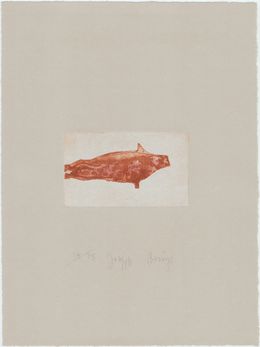


Joseph Beuys
Print - 32 x 25 cm Print - 12.6 x 9.8 inch
$3,007






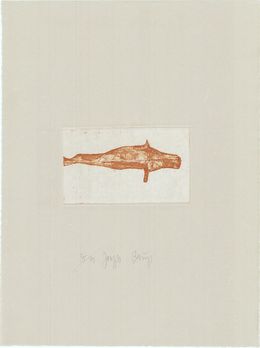

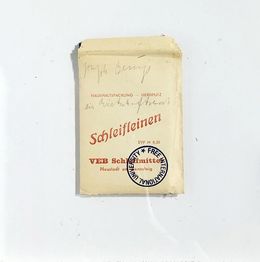
Joseph Beuys
Fine Art Drawings - 17.05 x 11.05 x 0.4 cm Fine Art Drawings - 6.7 x 4.4 x 0.2 inch
$3,368

Joseph Beuys
Fine Art Drawings - 12 x 7.5 x 0.5 cm Fine Art Drawings - 4.7 x 3 x 0.2 inch
$3,368
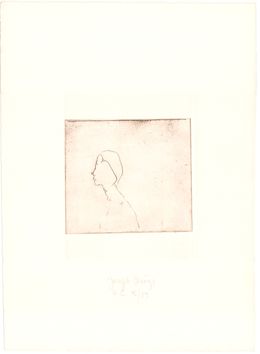




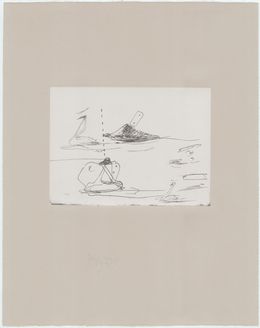



Joseph Beuys
Print - 50 x 43 cm Print - 19.7 x 16.9 inch
$2,285

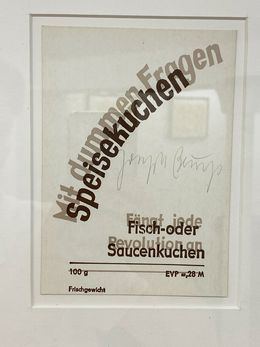
Joseph Beuys
Fine Art Drawings - 14.7 x 10.5 x 0.1 cm Fine Art Drawings - 5.8 x 4.1 x 0 inch
Sold

Joseph Beuys
Fine Art Drawings - 16 x 22 x 0.1 cm Fine Art Drawings - 6.3 x 8.7 x 0 inch
Sold
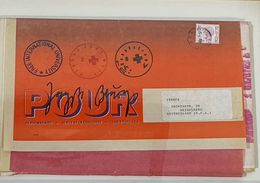
Joseph Beuys
Fine Art Drawings - 19 x 29.5 x 2.5 cm Fine Art Drawings - 7.5 x 11.6 x 1 inch
Sold
